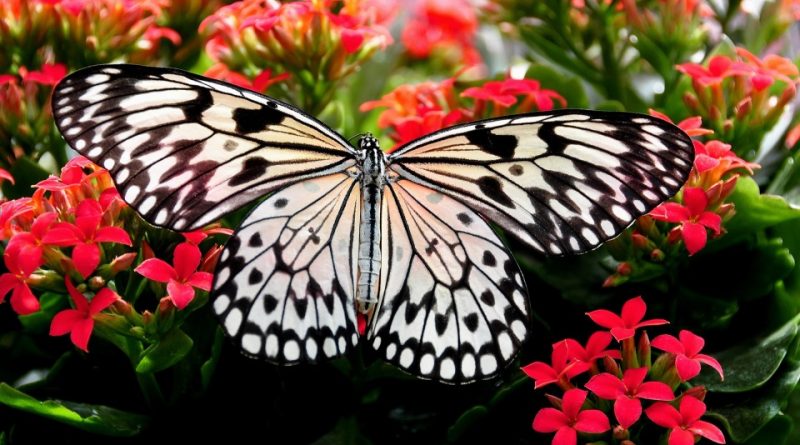Idea leuconoe
Idea leuconoe
The paper kite butterfly (Idea leuconoe Erichson, 1834) is a moth belonging to the Nymphalidae family.
Systematic –
From a systematic point of view it belongs to the Eukaryota Domain, Animalia Kingdom, Sub-Kingdom Eumetazoa, Superphylum Protostomia, Phylum Arthropoda, Subphylum Tracheata, Superclass Hexapoda, Insecta Class, Subclass Pterygota, Endopterygota Cohort, Order Oligoneoptera, Order Epidopidae, Order Epidopata, Heteroneura, Ditrysia Division, Papilionoid Superfamily, Nymphalidae Family, Danainae Subfamily, Danaini Tribe, Euploein Sub-tribe and therefore to the Idea Genus and the I. leuconoe Species.
Within this species, the following subspecies are recognized:
– I l. athesis Fruhstorfer, 1911;
– I l. caesena Fruhstorfer, 1911;
– I l. chersonesia (Fruhstorfer, 1898);
– I l. clear (Butler, 1867);
– I l. deception (Doherty, 1891);
– I l. esanga Fruhstorfer, 1898;
– I l. Frehla Fruhstorfer, 1911;
– I l. godmani Oberthür, 1878;
– I l. chubby Fruhstorfer, 1911;
– I l. Javana Fruhstorfer, 1896;
– I l. kwashotoensis (Sonan, 1928);
– I l. lasiaka van Eecke, 1913;
– I l. leuconoe Erichson, 1834;
– I l. Moira Fruhstorfer, 1910;
– I l. natnensis Snellen, 1895;
– I l. Nigriana Grose-Smith, 1895;
– I l. Dark Staudinger, 1889;
– I l. Princess Staudinger, 1889;
– I l. Samara Fruhstorfer, 1910;
– I l. siamensis (Godfrey, 1916);
– I l. solyma Fruhstorfer, 1910;
– I l. Fruhstorfer vedana, 1906;
– I l. Vicetia Fruhstorfer, 1911.
Geographical Distribution and Habitat –
Idea leuconoe is a butterfly widespread in Southeast Asia where it is found especially in western Malaysia, and perhaps in Taiwan and the Philippines, although there is some disagreement among taxonomists that non-Malaysian forms are subspecies of leuconoe or another species.
Its habitat is, in particular, that of the coastal mangrove forest and the lowland rainforest at altitudes between sea level and about 400 m.
Morphology –
The paper kite butterfly can be recognized as the adult is a large butterfly, with a wingspan of 12 to 14 cm, which presents itself with translucent white wings modeled with black veins and numerous oval black spots.
The pupa, on the other hand, is characterized by a lively yellow color with black speckles.
Aptitude and biological cycle –
These beautiful butterflies are poisonous or highly unpleasant for birds and, therefore, are not attacked, if not rarely, by them.
The slow flight, their particular way of flying and the bright wing ornaments, are recognized by the birds who, through past experiences, associate them with a very unpleasant taste. Indeed, some individuals of these butterflies are sacrificed for the sake of the species as a whole.
Their bodies contain toxins that are derived from lactiferic larval food plants and are often supplemented by additional toxins taken from other food sources that adults feed on.
In sunny days, adult males rest with their wings erect or partially open, ready to fly to intercept potential companions.
In cool or cloudy weather these butterflies are more relaxed and can sometimes be found feeding on flowers on the sides of the roads. When they feed, they tend to flutter slowly or glide with their wings, but when they land on the foliage they have their wings fully extended.
Ecological role –
The Idea leuconoe is a butterfly known for its slow and very graceful flight, which gives them the appearance of white handkerchiefs that gently float in the breeze.
It is a butterfly best known for its presence among collectors and in live butterfly exhibitions.
The larvae of this moth feed on species of Parsonsia, Tylophora hispida, Parsonsia helicandra, Parsonsia spiralis and Cynanchum formosanum, which is why both the adult butterfly and the larva are poisonous.
Guido Bissanti
Sources
– Wikipedia, the free encyclopedia.
– Russo G., 1976. Agricultural entomology. Special Part. Liguori Editore, Naples.
– Tremblay E., 1997. Applied entomology. Liguori Editore, Naples.

